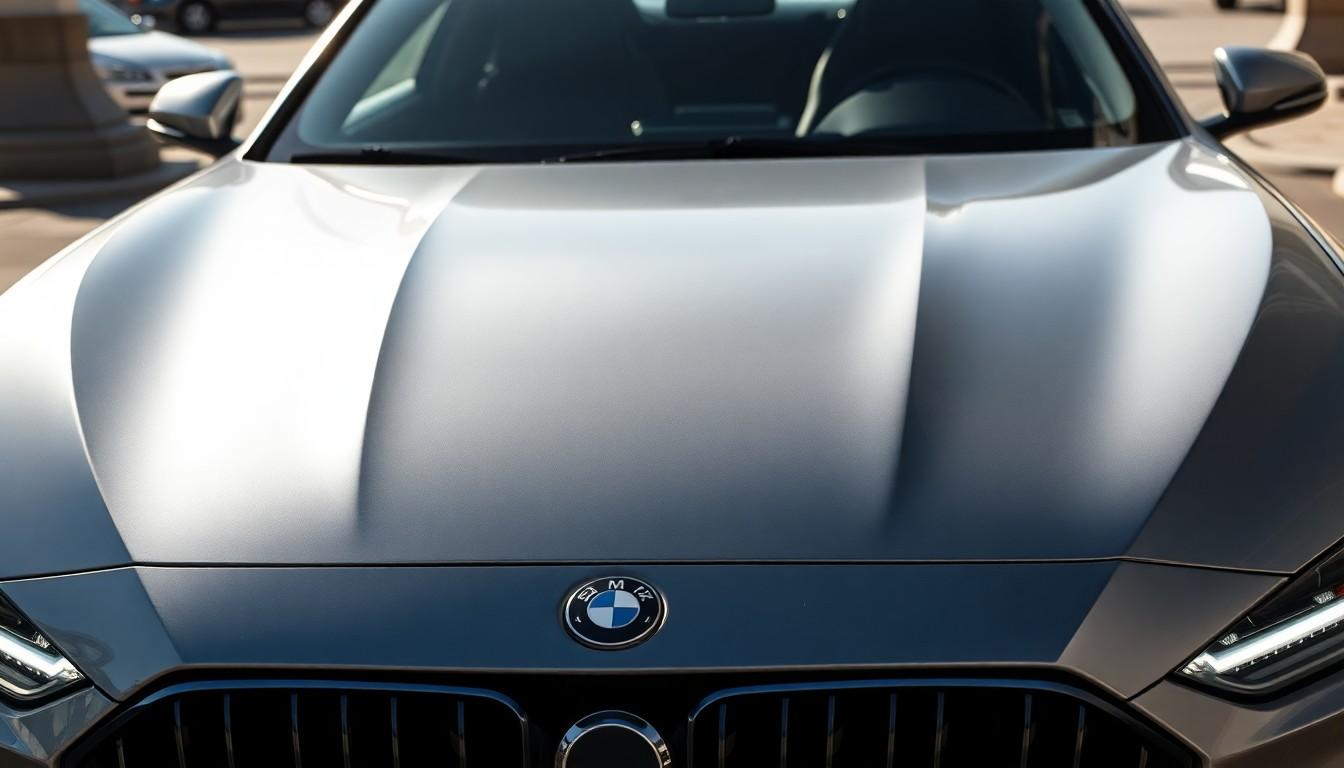When we think about a car’s most essential components, the hood might not immediately come to mind—but it’s a crucial part of your vehicle’s design and function. This protective panel that covers your engine compartment does more than just shield your car’s vital components from the elements.
We’ve noticed many drivers don’t fully understand the car hood’s purpose beyond its obvious appearance. It’s not just about aesthetics—it’s engineered for safety, aerodynamics, and engine access. Whether you’re a new car owner or simply curious about automotive design, understanding your vehicle’s hood can help you better maintain your car and appreciate its thoughtful engineering.
What Is a Car Hood and Its Purpose
A car hood (or bonnet in British English) is the hinged metal panel that covers the engine compartment of a vehicle. This essential component forms the upper front section of the car’s body, typically extending from the front grille to the base of the windshield. Car hoods are constructed from various materials including steel, aluminum, carbon fiber, or fiberglass, each offering different benefits in terms of weight, durability, and cost.
The primary purpose of a car hood is to protect the engine and other critical components from external elements such as rain, snow, debris, and dust. It creates a barrier that shields sensitive mechanical parts from potential damage while keeping them clean. Modern hoods are designed with aerodynamics in mind, helping to reduce drag and improve fuel efficiency as air flows over the vehicle.
Car hoods serve a crucial safety function by absorbing impact energy during front-end collisions. Many hoods feature crumple zones engineered to collapse in a controlled manner during accidents, redirecting force away from the passenger compartment. This protective design helps minimize injury risk to both occupants and pedestrians if a crash.
Also, the hood provides convenient access to the engine compartment for maintenance and repairs. Its hinged design allows mechanics or car owners to easily check fluid levels, replace worn parts, or perform routine service tasks. Some higher-end vehicles feature specialized hood designs such as vented hoods for improved engine cooling or scooped hoods that direct additional airflow to the engine.
Anatomy of a Car Hood
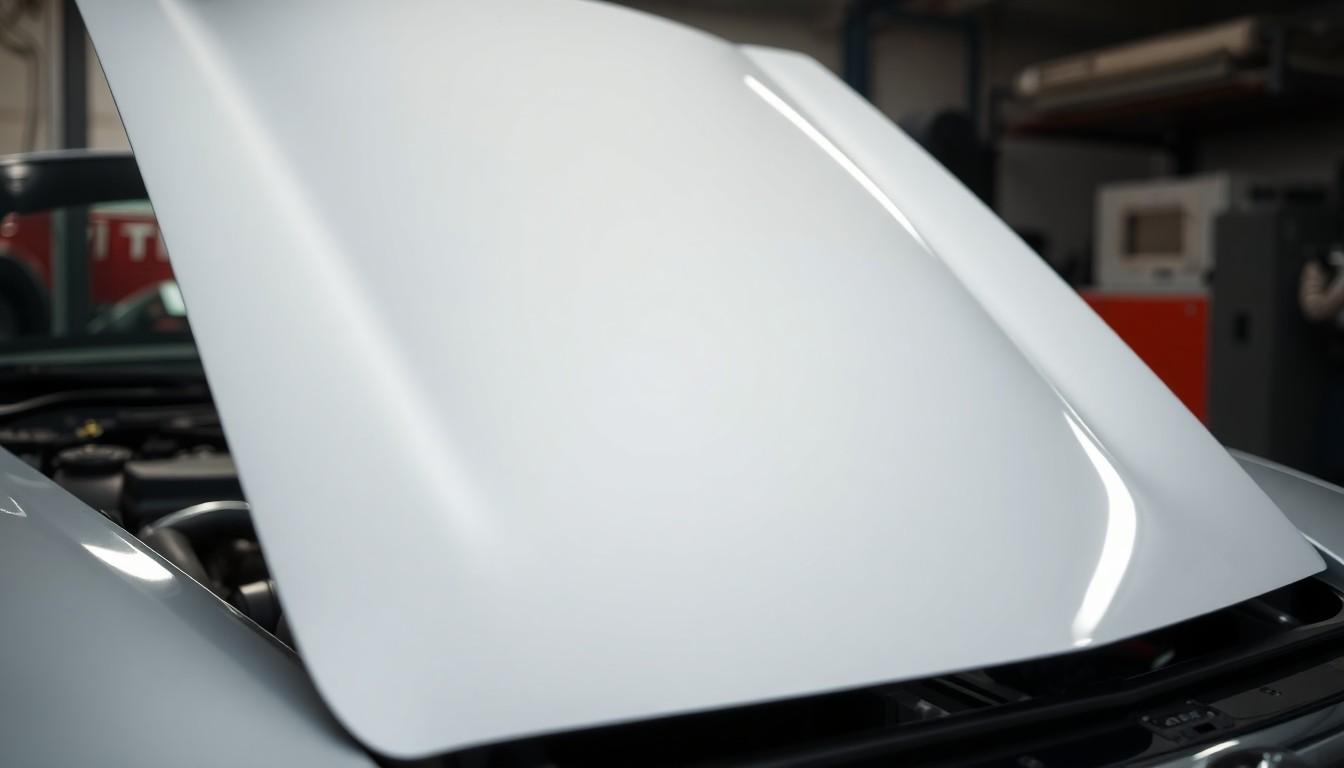
A car hood consists of several interconnected components that work together to protect your engine while providing necessary access for maintenance. Understanding the anatomy of this crucial part helps car owners appreciate its design and functionality.
Hood Panels and Materials
Car hood panels are manufactured using various materials selected for exact performance characteristics and price points. Steel remains a popular choice for many manufacturers due to its exceptional strength and durability in everyday driving conditions. Aluminum offers a lightweight alternative that provides excellent corrosion resistance while reducing overall vehicle weight for improved fuel efficiency. Sports cars frequently use fiberglass panels that deliver an impressive strength-to-weight ratio at a reasonable cost. High-performance and luxury vehicles often feature carbon fiber hoods, prized for their extraordinary strength combined with minimal weight, though at a premium price point. The material selection significantly impacts the hood’s performance, longevity, and the vehicle’s overall efficiency.
Hood Latch Mechanisms
Hood latch mechanisms employ a multi-stage security system to keep your engine compartment safely covered during operation. The primary hood release mechanism typically consists of a lever or button located inside the vehicle cabin that, when activated, disengages the main hood latch. Safety engineering requires a secondary latch or catch that must be manually released after the primary mechanism, preventing accidental hood openings while driving. This secondary release usually takes the form of a lever positioned near the hood’s front edge. Many modern vehicles incorporate hood struts or springs that support the hood’s weight when opened, creating hands-free access to the engine compartment and preventing accidental closures during maintenance activities. These components collectively ensure both security during operation and convenient access when needed.
Evolution of Car Hoods Through Automotive History
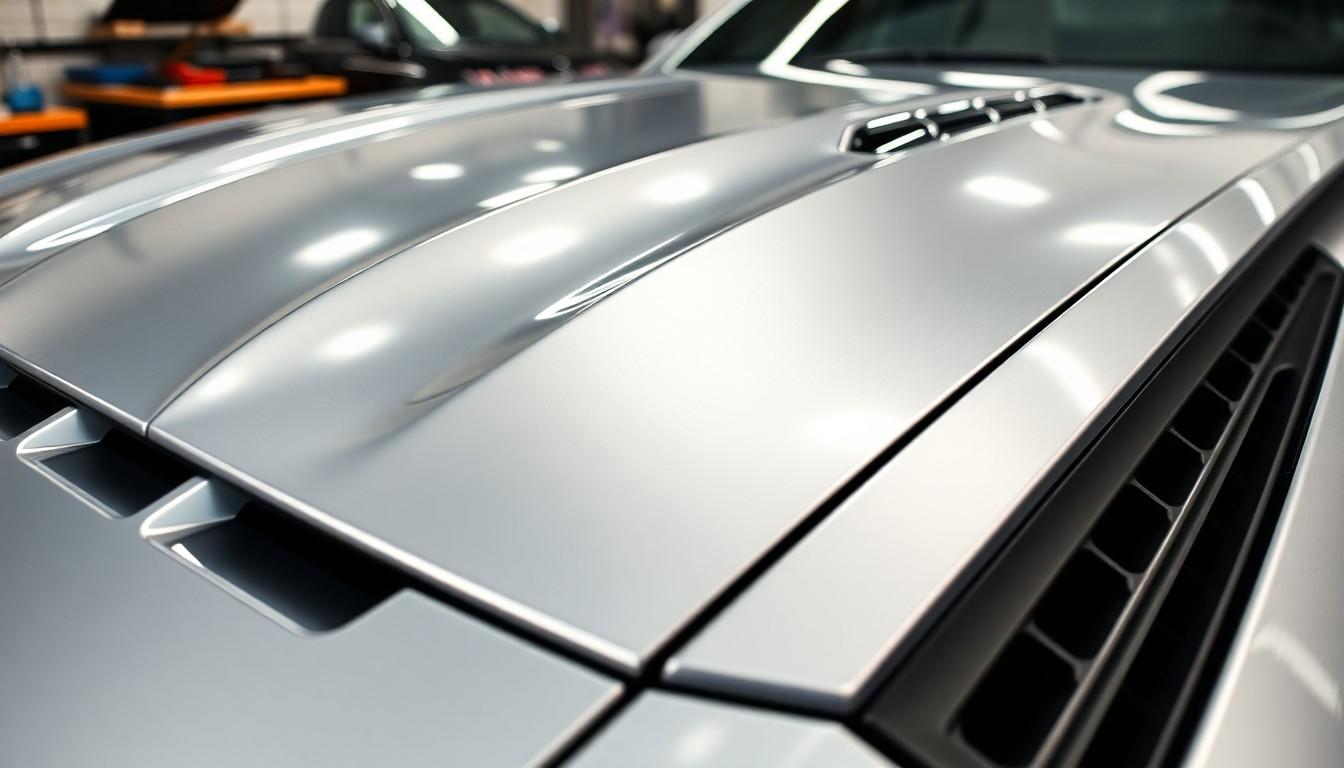
Car hoods have transformed dramatically since the early days of automobiles, reflecting advances in engineering, materials science, and automotive design principles. Early automotive hoods were simple flat steel panels hinged at the front, providing basic engine protection while allowing maintenance access. These rudimentary designs laid the foundation for the sophisticated hood systems we recognize today.
Material Evolution
The materials used in car hood construction have progressed significantly:
- Steel to Aluminum: Traditional steel hoods dominated early automotive design, but aluminum gained popularity for its lighter weight and superior corrosion resistance
- Carbon Fiber: High-performance vehicles now use carbon fiber hoods, reducing weight by up to 60% compared to steel counterparts
- Fiberglass: Common in aftermarket applications, fiberglass offers a balance between performance and affordability
- Dry Carbon: Premium racing applications leverage dry carbon for its exceptional strength-to-weight ratio
Design and Aerodynamics
Hood designs have evolved from purely functional components to sophisticated aerodynamic elements:
- Contoured Shapes: Modern hoods feature carefully sculpted surfaces that reduce drag coefficient and improve fuel economy
- Integrated Vents: Strategic air channels help dissipate engine heat while improving overall airflow management
- Hood Scoops: Performance vehicles incorporate functional scoops that force air into the engine compartment, improving combustion efficiency
- Power Bulges: These raised sections accommodate larger engine components while maintaining the hood’s structural integrity
Functional Enhancements
Today’s car hoods incorporate many functional improvements beyond basic engine coverage:
- Sound Dampening: Modern hoods include specialized materials that reduce engine noise by up to 40% compared to older designs
- Heat Management: Advanced thermal barriers prevent excessive underhood temperatures, protecting sensitive electronic components
- Protective Coatings: Contemporary finishes resist environmental damage from UV radiation, acid rain, and road debris
- Crumple Zones: Strategic structural elements enhance passenger safety during frontal collisions
Mechanism and Accessibility
Hood opening mechanisms have progressed from exposed hardware to sophisticated systems:
- Concealed Latches: Interior-activated release systems have replaced external handles for improved security and aesthetics
- Soft-Close Technology: Premium vehicles feature dampened closing mechanisms that prevent slamming
- Quick-Release Pins: Racing applications use removable pins for rapid hood removal during competition
- Electronic Controls: Some luxury vehicles now incorporate power-operated hood systems for hands-free access
These evolutionary changes reflect the automotive industry’s continuous pursuit of improved performance, safety, and efficiency in every aspect of vehicle design.
Different Types of Car Hoods
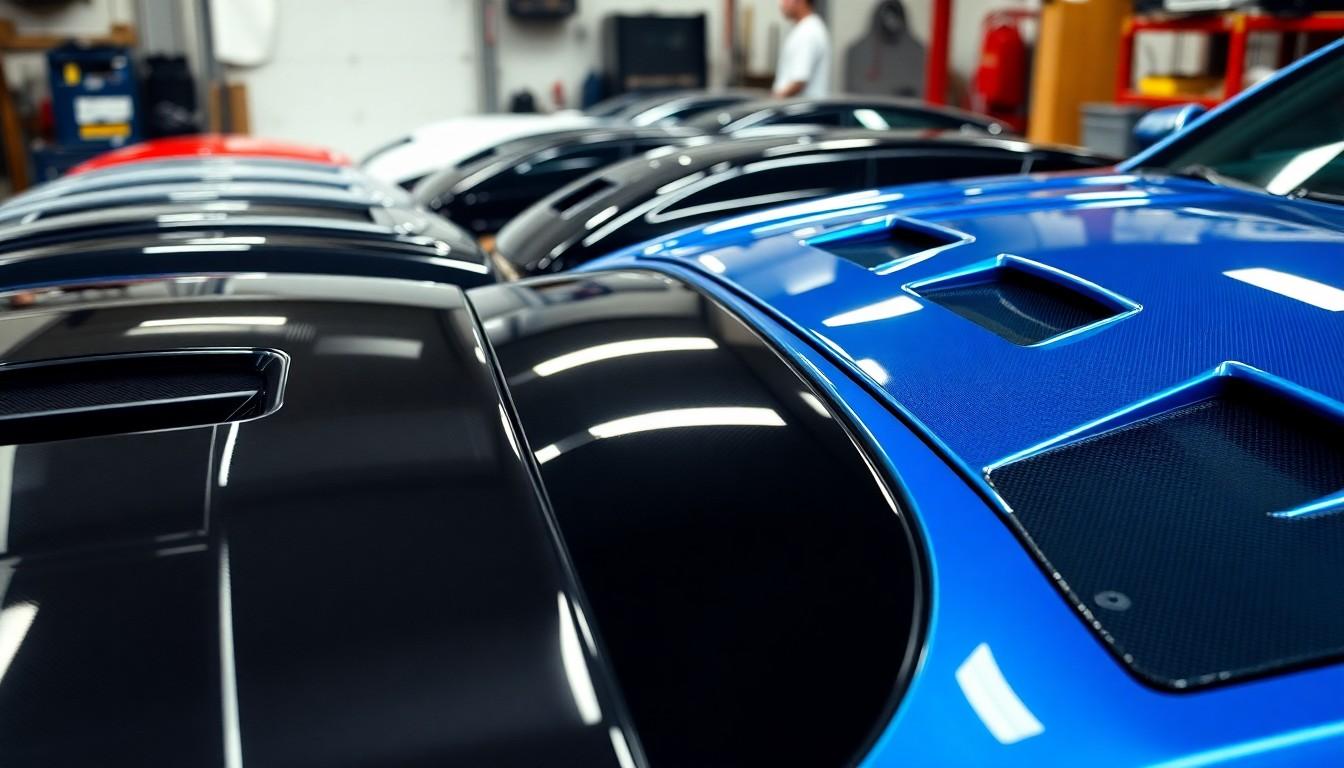
Car hoods come in several distinct varieties, each designed for exact purposes ranging from basic protection to enhanced performance. Let’s explore the main types of car hoods available in today’s automotive market.
Factory Standard Hoods
Factory standard hoods are the original equipment manufacturer (OEM) components installed on vehicles during production. These hoods perfectly match the exact vehicle model’s design specifications and aesthetic qualities. Typically constructed from steel or aluminum, factory hoods provide optimal protection for engine components while maintaining the vehicle’s intended aerodynamic profile. OEM hoods undergo rigorous testing to ensure they meet safety standards and integrate seamlessly with the vehicle’s overall design language.
Performance and Aftermarket Hood Options
Performance and aftermarket hoods offer enhanced functionality and styling beyond what factory options provide. These specialized hoods often feature unique design elements like:
- Hood Scoops: Openings that direct additional airflow to the engine, potentially improving performance by supplying cooler, denser air for combustion. Not all scoops are functional—some exist purely for aesthetic appeal.
- Power Bulges: Raised sections on the hood surface that accommodate larger engine components and improve airflow dynamics around the engine bay.
- Carbon Fiber Construction: High-performance aftermarket hoods frequently use carbon fiber for its exceptional strength-to-weight ratio, significantly reducing overall vehicle weight.
- Fiberglass Options: A popular aftermarket material that balances weight reduction with affordability compared to carbon fiber alternatives.
- Dry Carbon Variants: Premium performance hoods made from pre-preg carbon fiber that’s cured in an autoclave, resulting in the lightest possible hood with maximum strength.
- Exposed Hood Pins: Many performance hoods replace traditional concealed latches with exposed pins for added security during high-speed driving and easier access.
Aftermarket hoods can transform both a vehicle’s appearance and performance characteristics by reducing weight, improving engine cooling, and creating a distinctive look. Custom designs often incorporate specialized venting patterns or unique contours that set vehicles apart at car shows or performance events.
Common Car Hood Problems and Maintenance
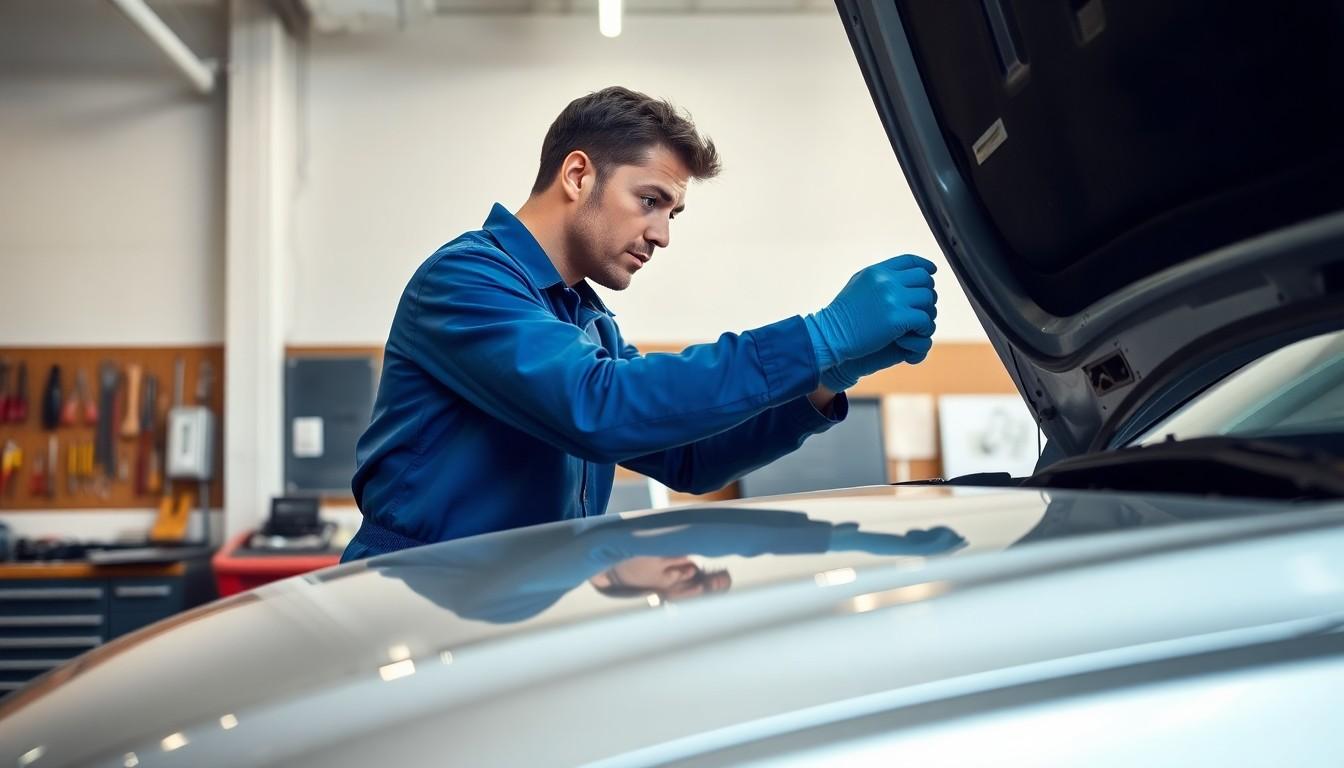
Car hoods experience several common issues that require regular attention to maintain both functionality and appearance. These problems can affect your vehicle’s performance, safety, and aesthetic appeal when left unaddressed.
Rust and Paint Damage
Rust formation on car hoods occurs primarily due to exposure to moisture, salt, and environmental elements, especially in regions with harsh weather conditions. Small scratches or chips in the paint expose the metal underneath, creating entry points for corrosion to begin. Regular washing and applying a quality wax coat provides essential protection against these elements, creating a barrier that prevents moisture from reaching the metal surface. Touch-up paint should be applied promptly to any scratches to prevent rust from developing and spreading across the hood’s surface.
Paint damage manifests in various forms, including fading from UV exposure, scratches from road debris, and chipping from minor impacts. Protective coatings like ceramic sealants offer additional defense against environmental damage by creating a hydrophobic layer that repels water and contaminants. Parking in shaded areas or using car covers reduces UV exposure, which helps maintain the hood’s color vibrancy and prevents premature deterioration of the paint’s protective properties.
Hood Alignment Issues
Misaligned hoods create several problems ranging from annoying rattles to serious safety concerns during driving. Common causes include accidents, improper closure, worn hinges, or damaged latch mechanisms that prevent the hood from sitting flush with the vehicle’s body. A properly aligned hood creates even gaps around all edges and sits level with adjacent body panels, ensuring both aesthetic appeal and proper functionality.
Hood latch mechanisms require periodic inspection to ensure they’re operating correctly and securely holding the hood closed while driving. Lubrication of moving parts within the latch system prevents binding or sticking that might prevent proper engagement. Adjustments to the hood’s position can typically be made by loosening the hinge bolts and repositioning the hood before retightening, though important misalignment might indicate structural damage requiring professional assessment. Regular maintenance checks help identify potential alignment issues before they become serious problems that might lead to the hood opening unexpectedly while driving.
For effective maintenance, inspect your hood’s underside during routine oil changes, looking for early signs of rust formation or damaged components. Clean the hood’s drainage channels to prevent water accumulation that leads to corrosion. Addressing small issues immediately prevents them from developing into costly repairs that might require complete hood replacement.
When to Replace Your Car Hood
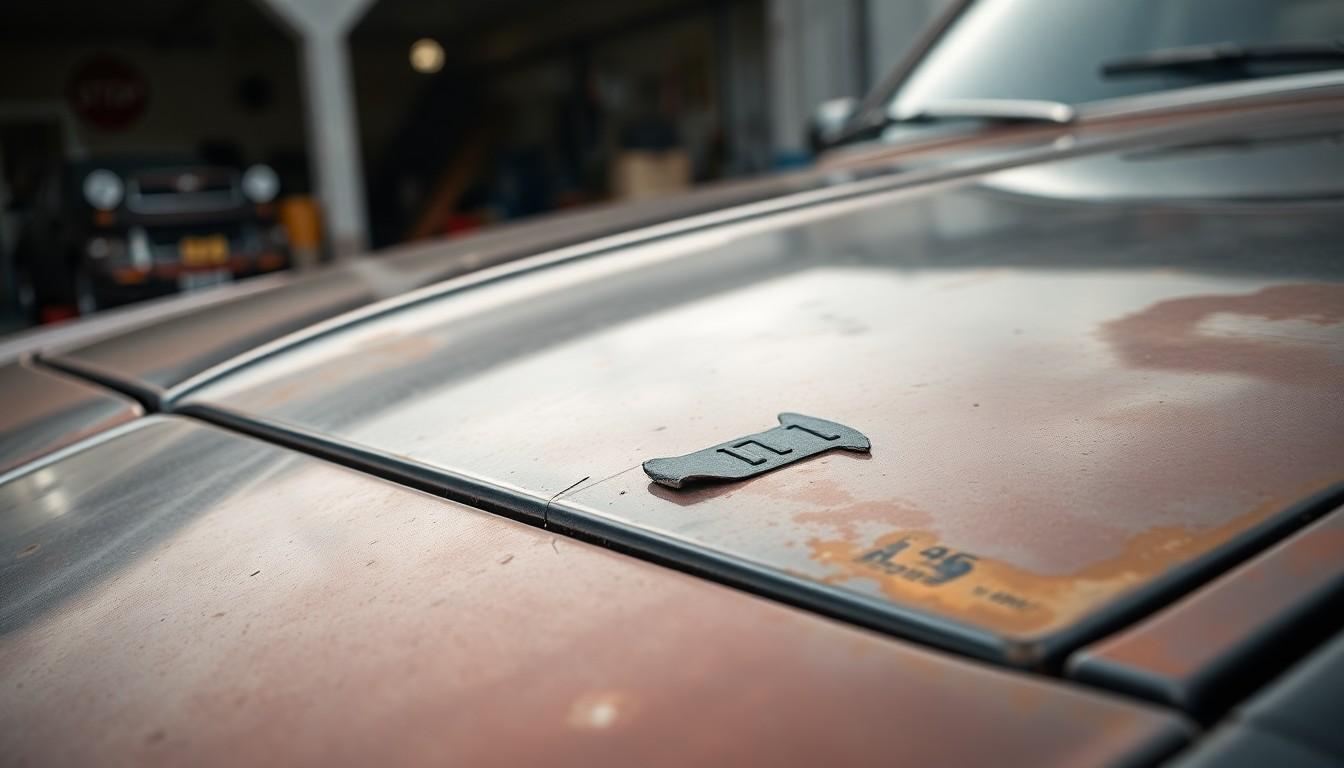
Knowing when to replace your car hood is essential for maintaining both vehicle safety and aesthetics. Several situations warrant hood replacement rather than repair. Let’s explore the most common scenarios that indicate it’s time for a new hood.
1. Damage from Accidents
Collision damage often necessitates hood replacement, especially when the structural integrity has been compromised. Hoods damaged in accidents may develop weakened points that fail to adequately protect engine components. Even minor collisions can affect the hood’s aerodynamic properties and overall appearance, making replacement the most practical solution for ensuring proper engine protection.
2. Rust or Corrosion
Extensive rust or corrosion signals the need for hood replacement to prevent further deterioration. Rust typically starts as small spots but quickly spreads, compromising the metal’s strength and protective qualities. Once corrosion penetrates through the hood material, replacement becomes more cost-effective than attempting repairs, as the underlying components could suffer damage from exposure to environmental elements.
3. Mechanical Failure
Hood latch or hinge mechanism failures create safety hazards that often require complete replacement. Broken latches might cause the hood to open unexpectedly while driving, obstructing visibility and potentially causing accidents. Malfunctioning hinges can make it difficult or impossible to securely close the hood, leaving your engine vulnerable to environmental damage and compromising vehicle security.
4. Aesthetic Reasons
Important cosmetic damage like deep dents, extensive scratches, or severe paint fading justifies hood replacement for appearance purposes. These imperfections not only detract from your vehicle’s visual appeal but can also affect its resale value. Many car owners choose to replace visibly damaged hoods to maintain their vehicle’s presentability and preserve its market worth.
5. Performance Enhancements
Upgrading to an aftermarket hood made from lightweight materials can substantially improve your vehicle’s performance characteristics. Carbon fiber hoods reduce overall vehicle weight, potentially improving acceleration and fuel efficiency. Performance-oriented hoods with functional vents or scoops improve engine cooling and airflow, making them popular choices for enthusiasts looking to maximize their vehicle’s capabilities.
6. Age and Wear
Years of environmental exposure eventually deteriorate even well-maintained hoods beyond practical usefulness. Sun damage, repeated temperature cycles, and general weathering can cause materials to become brittle or warped over time. When your hood no longer provides adequate protection or reliable access to the engine compartment due to age-related wear, replacement represents the most sensible solution.
How to Properly Care for Your Car Hood
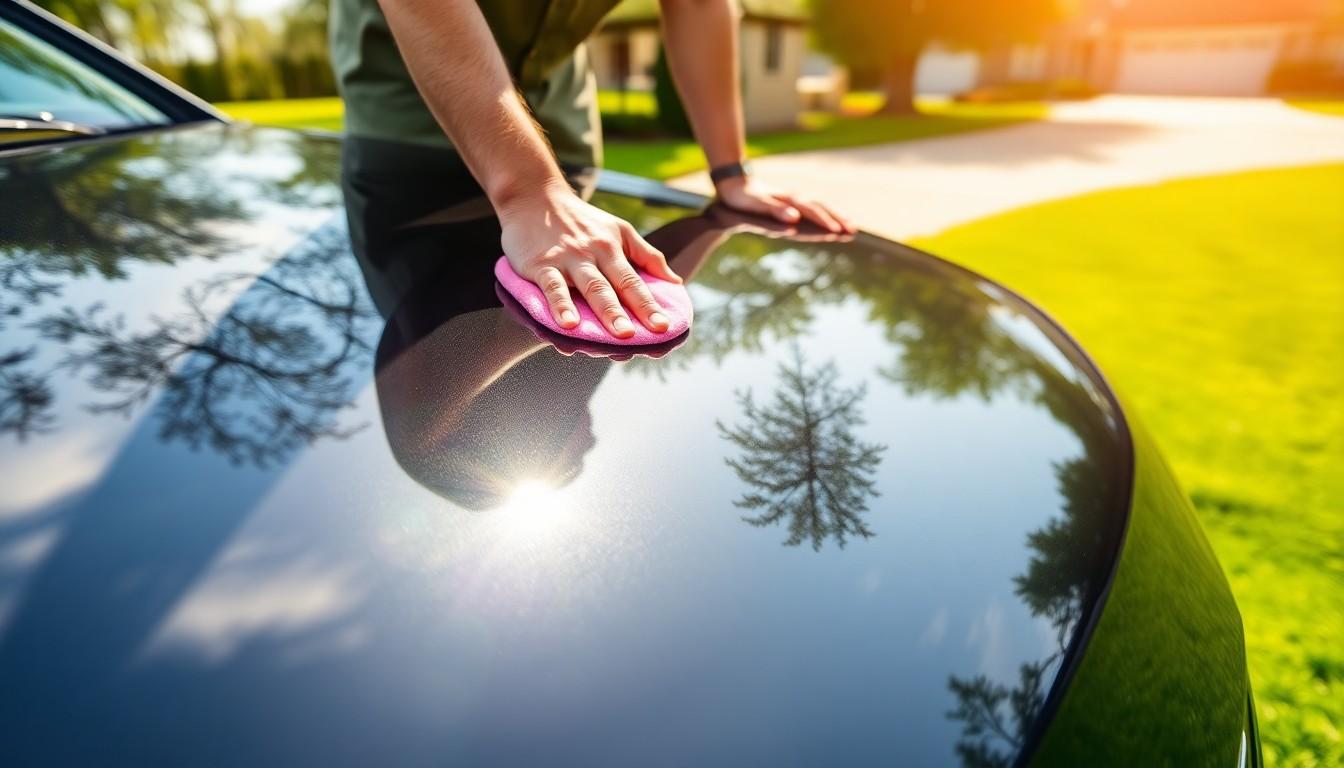
1. Regular Cleaning
Regular cleaning prevents damage to your car hood by removing accumulated dirt, debris, and environmental contaminants. These substances can eat away at paint and eventually damage the underlying metal if left unattended. We recommend using a mild car wash soap specifically formulated for automotive finishes rather than household detergents that might strip protective coatings. Avoid high-pressure washing systems that can force water into seams or potentially damage paint, especially if there are any small chips or cracks present.
2. Waxing and Polishing
Car wax creates a protective barrier against UV rays, bird droppings, tree sap, and other environmental hazards that damage hood paint. Apply a quality automotive wax every three months to maintain this invisible shield and enhance your hood’s appearance. Polishing the hood before waxing removes minor surface imperfections and restores shine, with modern polishing compounds containing fine abrasives that safely remove a microscopic layer of clear coat to reveal the fresh surface underneath.
3. Inspect for Damage
Monthly inspections help identify hood damage early before minor issues become major problems. Look for paint chips, scratches, dents, or early signs of rust formation, particularly along the leading edge where road debris commonly impacts. Check hood hinges and latches for proper operation and signs of wear or corrosion. Address small scratches and chips promptly using touch-up paint to prevent moisture from reaching the metal and causing rust.
4. Proper Opening and Closing
Correct hood operation prevents damage to both the hood and latch mechanisms. Always use the interior release lever located under the dashboard to disengage the primary latch. Support the hood properly while open, using the manufacturer’s rod or built-in struts rather than improvised supports that could slip and cause damage. Close the hood gently by lowering it to about 12 inches above the closed position before releasing, allowing the latch to engage without excessive force that could bend the metal.
5. Maintenance Access
The hood provides essential access to many maintenance points requiring regular attention. Keep the engine bay reasonably clean to make maintenance easier and prevent buildup of leaves, debris, or excessive grease that can trap moisture and accelerate corrosion. Label important maintenance points under the hood for quick reference during routine service. Organize wiring and hoses neatly after maintenance to prevent pinching or rubbing when closing the hood.
6. Heat and Ventilation
Functional hood vents and scoops play a critical role in engine cooling and performance. Clear any obstructions from these openings regularly, checking for leaves, debris, or insect nests that might block airflow. Inspect heat shields attached to the underside of the hood for secure mounting and proper condition. These shields prevent engine heat from damaging the hood’s paint and components. Replace damaged or missing heat shields promptly to maintain proper thermal protection and prevent warping of the hood panel.
Conclusion
The car hood stands as an essential component that blends functionality safety and style. It’s far more than just a cover—it’s a carefully engineered system that protects vital components enhances aerodynamics and contributes to your vehicle’s overall performance.
Whether you’re driving with a factory standard hood or have upgraded to a performance option regular maintenance is key to preserving both function and appearance. By understanding the purpose materials and common issues associated with your car hood you’ll be better equipped to care for this critical vehicle element.
Remember that proper hood maintenance not only extends its lifespan but also contributes to your vehicle’s safety efficiency and resale value. With the right care your car hood will continue to serve its purpose effectively for years to come.
Frequently Asked Questions
What is the primary purpose of a car hood?
A car hood protects the engine and critical components from external elements while enhancing aerodynamics for better fuel efficiency. It also serves as a safety feature by absorbing impact energy during collisions through designed crumple zones, and provides convenient access to the engine compartment for maintenance and repairs.
What materials are commonly used for car hoods?
Car hoods are typically made from steel, aluminum, fiberglass, or carbon fiber. Steel offers strength and durability, aluminum provides a lightweight alternative, fiberglass is popular in sports cars for its strength-to-weight ratio, and carbon fiber is used in high-performance vehicles for exceptional strength with minimal weight, though at a higher cost.
How does a hood latch mechanism work?
Hood latch mechanisms employ a multi-stage security system. They include a primary release (usually a lever inside the vehicle), and a secondary latch that prevents accidental opening while driving. Modern vehicles often feature hood struts or springs that provide hands-free access to the engine compartment once the latches are released.
When should I replace my car hood?
Replace your hood when it has: structural damage from accidents, extensive rust or corrosion, mechanical failures of latches or hinges, significant aesthetic damage affecting appearance, or when upgrading for performance with lightweight materials. Natural aging that compromises functionality is also a valid reason for replacement.
How has car hood design evolved over time?
Car hoods evolved from simple flat steel panels to sophisticated designs incorporating lightweight materials like aluminum and carbon fiber. Modern hoods feature contoured shapes for improved aerodynamics, integrated vents for better airflow, and sound dampening materials. Hood opening mechanisms have also progressed from exposed hardware to concealed latches and electronic controls.
What are the different types of car hoods available?
Car hoods come in two main categories: factory standard (OEM) hoods designed specifically for vehicle models, and performance/aftermarket options. Aftermarket hoods often feature elements like hood scoops for improved airflow, power bulges for larger engine components, and are available in various materials including carbon fiber and fiberglass.
How should I maintain my car hood?
Maintain your car hood with regular cleaning, waxing, and polishing to protect the paint. Conduct monthly inspections for damage, use proper opening and closing techniques, and ensure adequate ventilation and heat protection. Promptly address small issues like rust spots or paint chips before they worsen into costly problems.
Why do some cars have vents or scoops on their hoods?
Hood vents and scoops serve functional purposes beyond aesthetics. They enhance engine cooling by directing air into the engine bay, reduce air pressure under the hood to prevent lift at high speeds, and can improve combustion efficiency by providing cooler air intake. On high-performance vehicles, these features are often essential for optimal engine operation.

